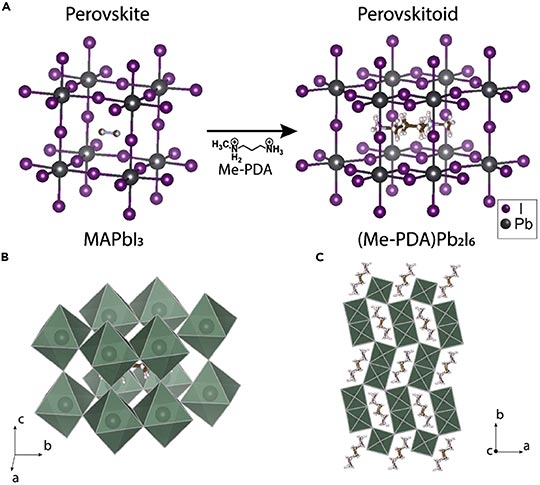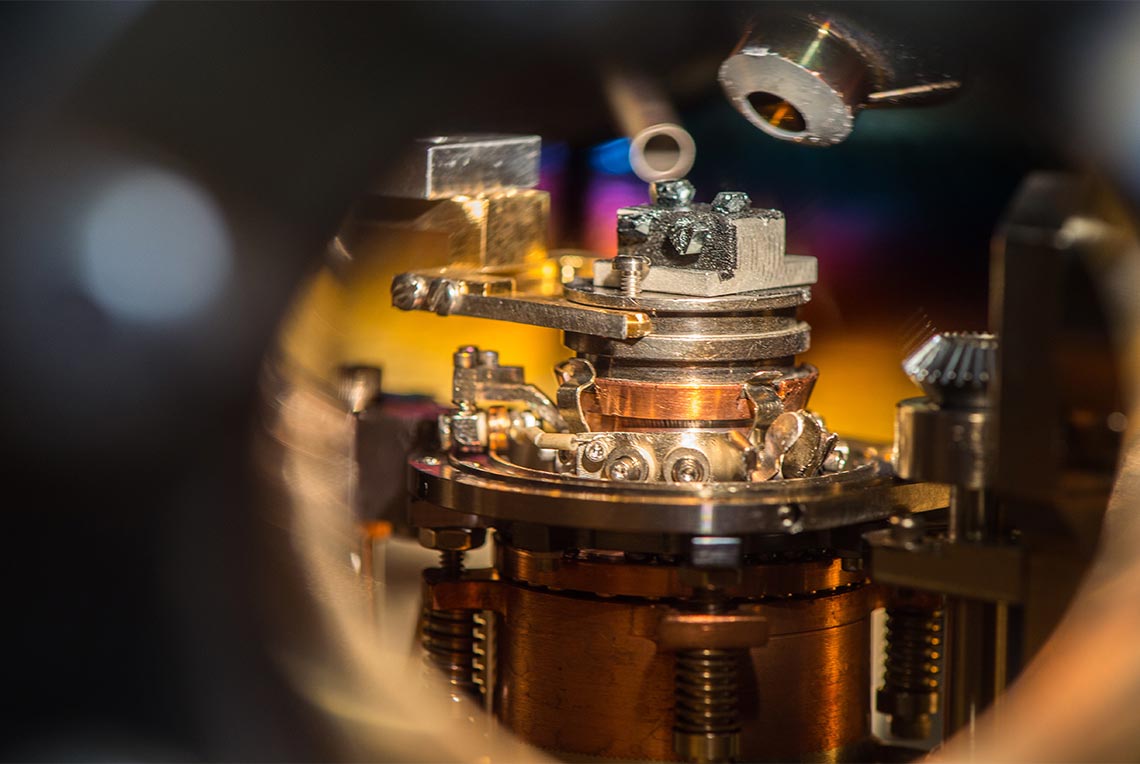Surface Lattice Engineering through Three-Dimensional Lead Iodide Perovskitoid for High-Performance Perovskite Solar Cells
March 11, 2021
Three-dimensional perovskitoid (Me-PDA)Pb2I6 surface layer modification by a simple surface treatment with Me-PDAI2 on top of a 3D perovskite thin film, led to smoother surface texture, longer charge-carrier lifetime, higher charge-carrier mobility, and reduced surface-defect density.
Scientific Achievement
A new bulky-organic-cation-based salt, N-methyl-1,3-propane diammonium diiodide (Me-PDAI2) can template a novel 3D "perovskitoid" structure (Me-PDA)Pb2I6, which exhibits ~28× better out-of-plane transport than the commonly used (PEA)2PbI4 2D structure.
Significance and Impact
Surface treatment Me-PDAI2 atop 3D perovskite forms a thin 3D (Me-PDA)Pb2I6 perovskitoid surface layer with smoother surface texture, longer charge-carrier lifetime, higher charge-carrier mobility, and reduced surface-defect density. Perovskitoid represents a new design motif for perovskite surface engineering.
Research Details
- Solution processing to prepare 3D perovskitoid based on N-methyl-1,3-propane diammonium (Me-PDA).
- Surface treatment induces the formation of 3D perovskitoid surface layer on top of 3D perovskite thin film.
- Detailed spectroscopic and electrical measurements to understand carrier transport and defect properties.
Related People
Joseph Berry
National Renewable Energy Laboratory
Matthew Beard
National Renewable Energy Laboratory
Kai Zhu
National Renewable Energy Laboratory

Crystal structure of (Me-PDA)Pb2sub>I6 (perovskitoid) compared with MAPbI3 (perovskite). (a) Perovskitoid can be derived from perovskite by replacing every octahedron with an edge-sharing octahedra dimer. (b) Side view of crystal structure of (Me-PDA)Pb2I6, featuring a combination of corner-sharing linkages and edge-sharing octahedra dimers. (c) Top view of crystal structure.









